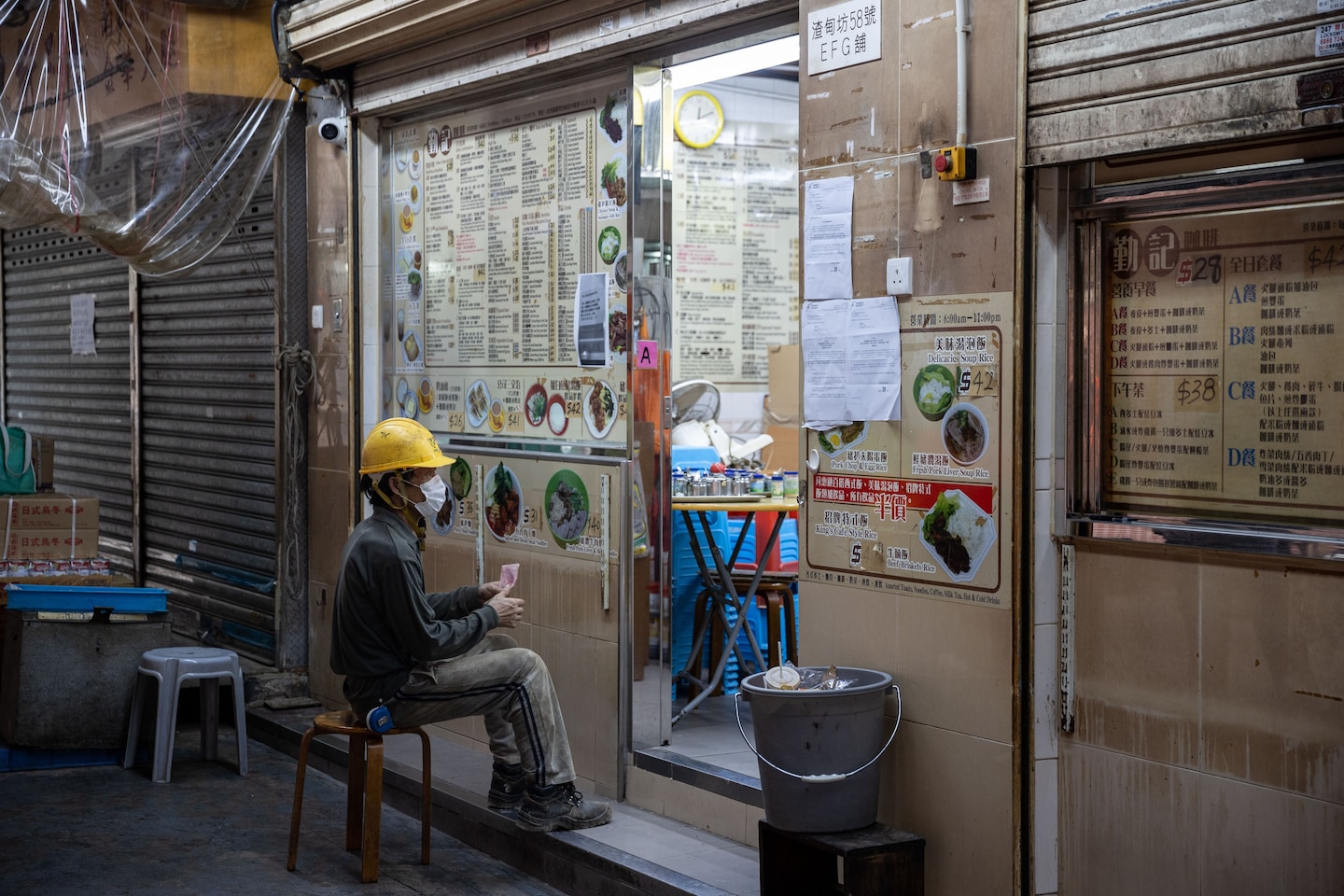With virus flip-flops, Hong Kongers ponder whether their leaders are out to lunch

Facing a record surge of novel coronavirus cases, Hong Kong authorities imposed strict social distancing measures, including the dine-in ban. But they stopped short of a lockdown — leaving construction crews, cleaners and others who cannot work from home or in air-conditioned offices squatting by gutters and enduring stifling heat to have their lunch.
Within 48 hours, the government reversed on the plan after a torrent of criticism — including from its political allies — that the policy appeared heartless. Dine-in eating will resume Friday, but restaurants will have to close by 6 p.m., and offer takeout only after that time, officials said Thursday. A maximum of two people will be allowed per table.
The episode underlined the Hong Kong government’s inability to balance policymaking with citizens’ welfare at a time when issues of state security and a crackdown on dissent have preoccupied officials. After earlier backflips on banning alcohol in restaurants and mandating mask-wearing — which the government tried to outlaw last year over political unrest — the reversal has left residents distrustful and confused by the pandemic response.
“Everyone can see that this has badly hurt the government’s credibility, even among their supporters,” said Ivan Choy, a senior lecturer at the Chinese University of Hong Kong who specializes in the city’s political leadership. “The government has a responsibility to make decisions in a balanced way but has failed in this case.”
The dine-in suspension, announced Monday, came in response to a resurgence of coronavirus infections this month. With more than 100 new cases reported for several consecutive days — many of them untraceable — this wave was the most severe since the virus surfaced here in January.
Medical experts have blamed numerous exemptions that government data show allowed more than 250,000 people to enter Hong Kong without quarantining for 14 days or taking a coronavirus test. Before this wave, Hong Kong had gone almost a month without a local transmission.
“People have come to see this third wave as a result of a mistake committed by the government, but yet, we all have to bear the consequences,” Choy said.
While officials took aim at restaurants, businesses such as hair salons, retail shops, supermarkets and others continued to operate as normal. Construction in the dense city hums away as usual. Moving companies, delivery workers, technicians, repair people and others have carried on, as have street cleaners and security guards.
When the measures were announced, Matthew Cheung, Hong Kong’s chief secretary, said workers who did not have the option of staying home could eat their lunch in their offices, or in country parks where there were no restrictions. Country parks in Hong Kong are mostly far from the city center and tend to be hilly or forested areas known for hiking trails.
The reality of the arrangement became clear Wednesday, when photos circulated on social media showing society’s most vulnerable forced to eat meals in degrading conditions. Hong Kong is among the world’s most expensive housing markets, and for many, cooking at home is a luxury they cannot afford in an apartment scarcely bigger than 100 square feet. In a city severely lacking in public space, local restaurants known as cha chaan tengs have long provided inexpensive meals that fuel a swath of the workforce.
A 27-year-old telecom repairman, eating on a bench outside a subway station under a sliver of shade in 90-degree weather Thursday, said restaurants are his only lunch option given that he spends his workday at other people’s homes.
“For seven months, we’ve been wearing masks, washing hands, trying to distance and staying at home, but then the government let in thousands and thousands of people with no testing or quarantine and now we have the third wave,” said the man, who gave only his last name, Sze. “What did we do wrong to deserve this?”
Louisa Mak, a 46-year-old DHL courier agent, said she felt lucky that she found a bench to eat lunch on Thursday. The previous day, she had to stand under a tree.
“How could we possibly find a country park to sit in during our workday?” Mak asked. “Their thinking makes no sense to me.”
Some experts in infectious-disease say suspending dine-in services may not have been necessary, given the impact on the economy, welfare concerns and the limited benefit to public health.
“I was concerned when I heard about this idea of stopping dining-in services,” said Ben Cowling, an epidemiologist at the University of Hong Kong. “There is no guarantee that there would be a safer place to eat lunch in than a restaurant.”
Cowling noted that restaurants have implemented measures such as mandatory temperature-taking and adding partitions between tables to mitigate the spread of the virus that causes the disease covid-19. Nearly all restaurants offer alcohol-based sanitizer, and some record customers’ contact details to make tracing easier if a case linked to their establishment emerges.
Lam Tai-man, a 36-year-old construction worker who was eating near his worksite Thursday, lamented that he could no longer go to the cafeteria where his company normally provided an inexpensive lunch.
“Now, there’s no iced coffee, no baked pork chop rice — only rice with dust,” said Lam, whose subdivided apartment has no cooking facilities. “I don’t know what the government wants from us. No one trusts them.”
He added: “Can officials who are sitting in a room with air-conditioning come here under the hot sun, and eat outside with us, before they come up with a policy?”






